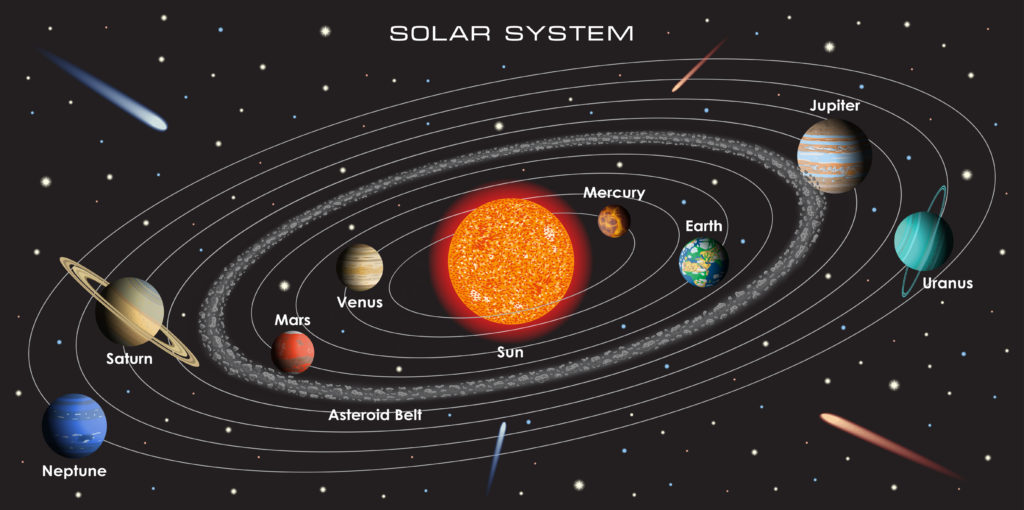This activity is a fun introduction to chromatography While we learn about the different planets in our solar system.
The idea is for children to create each planet using filter paper while thinking about the size and color of each one.
It is impossible to make correct size comparisons because the difference is actually very large, but some planets can be made smaller than others.
Planets made with filter paper
You will need to
Felt tip markers (non-permanent)
Water
Tray

Instructions
Choose a planet from the solar system and choose the colors you will use to create it.
Draw small colored circles on the filter paper.
Carefully drip water onto each circle using a pipette.
Observe how the colors spread out. You should see some separation of each ink, showing the colors that make up the ink.
Hang the filter papers to dry and then cut them to size.
WHAT IS CHROMATOGRAPHY?
Chromatography It is a scientific technique used to separate mixtures.
In this activity, the different colored inks from each marker move at different speeds through the filter paper and are therefore separated. Dark colored inks usually have more different colors than lighter colored inks.
This activity is not ideal for seeing the ink separation, but it looks nice and the colors blur together to look like a planet.
If you want to learn more about chromatography, set up an investigation using just a small felt-tipped dot of each color on the bottom of a strip of filter paper and hang it so that only the bottom is in the water and watch the colors separate as they rise up the paper.
Photos and activity taken from This is rocket science
More science for kids
Try one of my others space science experimentsYou'll be able to design, build and test rockets, learn about asteroids and meteorites and much more.
Walk through the solar system reducing the large distances involved!
Last updated on August 10, 2023 by Emma Vanstone